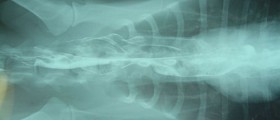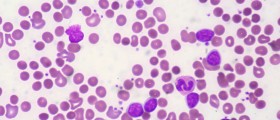Myasthenia gravis is a severe medical condition that predominantly affects adults and geriatric patients. However, it can also occur in children even though this does not occur frequently. Myasthenia gravis is most commonly an autoimmune disease, meaning that the body starts producing antibodies against its own cells and tissues (in this particular case antibodies are produced to destroy neuromuscular connections between muscles). In majority of cases the condition affects muscles around the eyes, mouth and throat.
In children myasthenia gravis develops as a consequence of a genetic disorder. It may also affect children whose mothers are suffering from the condition. In such case the baby shows signs of muscle weakness at birth. Fortunately, the baby soon recovers completely because the antibodies that have passed the placenta and entered baby's blood stream eventually lose their function.Types of Myasthenia Gravis in Children
Myasthenia gravis in children is classified into congenital myasthenia gravis, transient neonatal myasthenia gravis and juvenile myasthenia gravis.
Congenital myasthenia gravis is not an autoimmune disease but represents a genetic disorder. It is passed in an autosomal recessive pattern. The symptoms and signs of this type of myasthenia gravis first occur a year after the birth. The arms and legs become weak and there is obvious delay in motor skill development (postponed crawling, sitting and walking). Poor feeding habits, inadequate head control as well as weak eyelids are several more characteristics of congenital myasthenia gravis. The condition is incurable.
Transient neonatal myasthenia gravis is, as the very name suggests, only a transitory form of the disease. It affects babies whose mothers are suffering from myasthenia gravis. Antibodies from the mother's blood enter the baby's blood stream and hook to specific receptors, this way affecting neurotransmission. Fortunately, the effects of such blockage are only temporary and soon disappear. Babies suffering from transient neonatal myasthenia gravis are weak at birth and they cannot eat properly. Such infants may additionally develop respiratory problems and require mechanical breathing machines. However, symptoms and signs soon withdraw, the bay becomes strong and starts to function adequately.
And finally, juvenile myasthenia gravis is an actual autoimmune disease which predominantly affects female adolescents. This is a lifetime condition and goes through periods of remission and flare-ups. Such children feel weak even while performing mild tasks or light activity. All problems like chewing and swallowing difficulties, weakening of the eyelids etc. occur during flare-ups.
Treatment for Myasthenia Gravis in Children
Treatment in this case depends on several factors including the type of myasthenia gravis, child's age, medical history, symptoms and signs etc. There is no cure for the condition but symptoms and signs can be well controlled. Only transient neonatal myasthenia gravis withdraws spontaneously.
In other two types the treatment includes cholinesterase inhibitor medications and intravenous immunoglobulin. Some patients undergo thymectomy (surgical removal of the thymus gland). Plasmapheresis is also a good treatment option as it allows proper elimination of antibodies responsible for the symptoms and signs of the condition.




-In-Infants-And-Older-Children_f_280x120.jpg)


-And-Children-16-Warning-Signs-And-Symptoms_f_280x120.jpg)









Your thoughts on this
Loading...